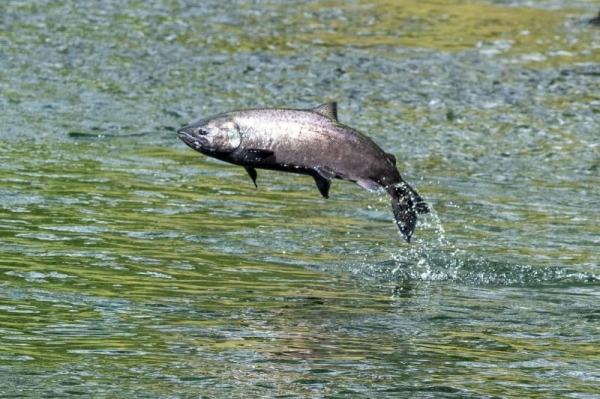Restored salmon habitat should resemble financial portfolios, offering fish diverse options for feeding and survival so that they can weather various conditions as the climate changes, a new study shows.
Restored salmon habitat should resemble financial portfolios, offering fish diverse options for feeding and survival so that they can weather various conditions as the climate changes, a new study shows.
The researchers looked at threatened spring-run Chinook salmon in tributaries of the Sacramento River. They found that restored sites that produce lots of fish may be especially vulnerable to changes such as drought. Such sites should be coupled with other varying sites that support the salmon population in diverse ways.
“The fish need all the different opportunities,” said Flora Cordoleani, a NOAA Fisheries and University of California Santa Cruz researcher who led the research published this week in Ecosphere. “Fish with one life history that favors certain habitat are not going to save the population in the long term. We need diverse habitats to support diverse life histories that help provide resilience.”
Life history refers to salmon traits such as their juvenile migration timing, growth rates, and food preferences. For instance, some juvenile salmon migrate to the ocean in their first year, while others may spend the year growing in freshwater first. That timing may benefit them in some years, but leave them more vulnerable in others, such as during drought.
Read more at NOAA Fisheries
Image: Spring-run Chinook salmon in California’s Central Valley were once the backbone of California’s commercial salmon fishery, but are now a threatened species that remain in a few tributaries of the Sacramento River. (Photo: Carson Jeffres / University of California, Davis)




